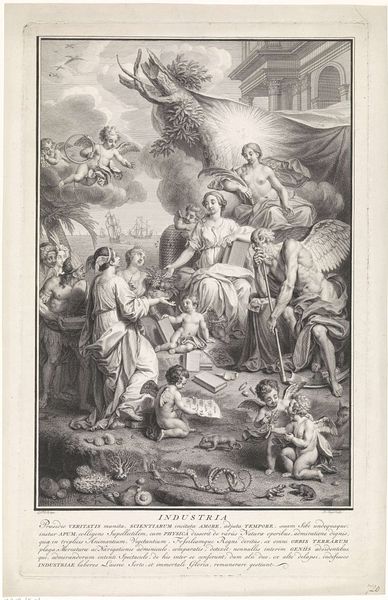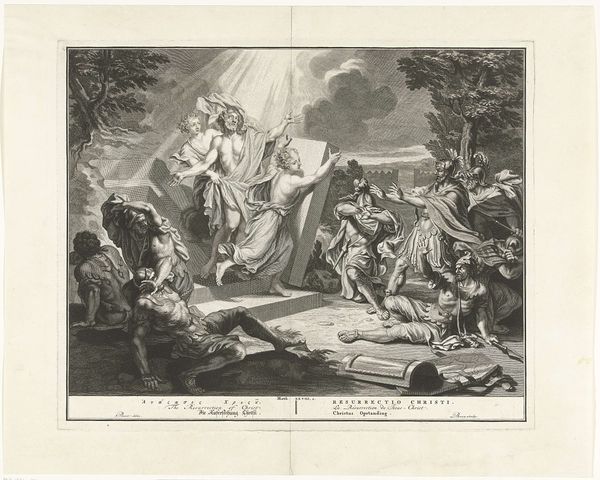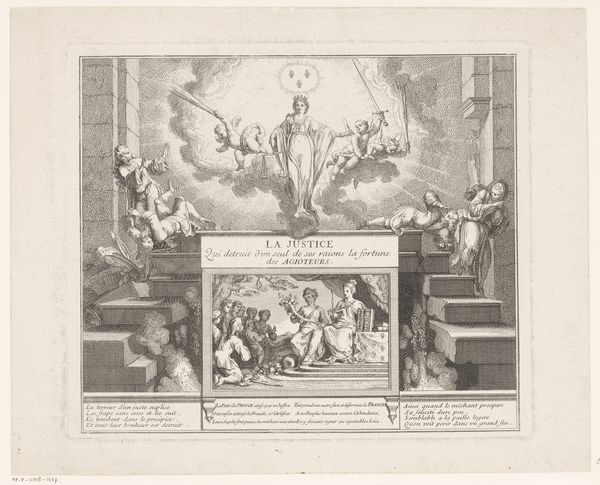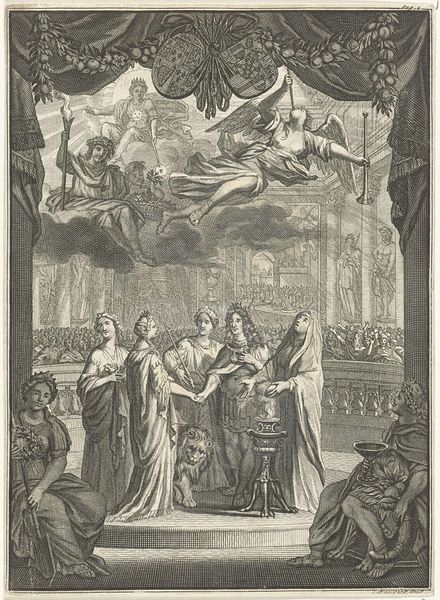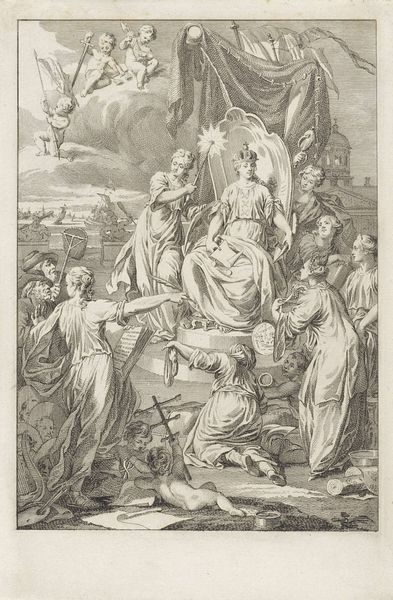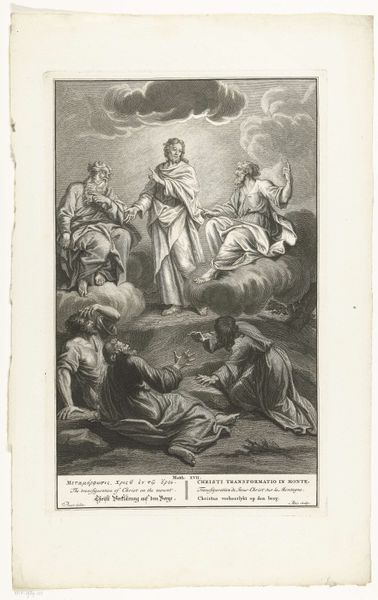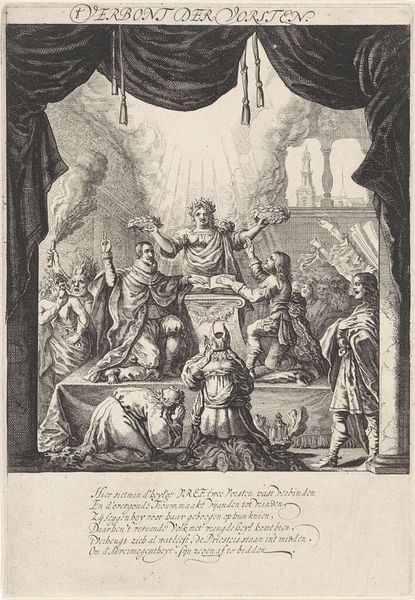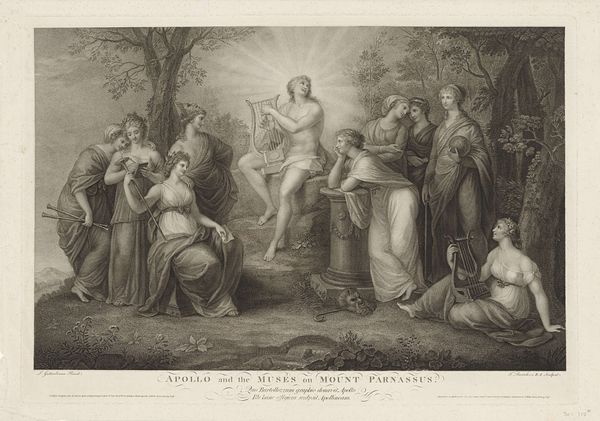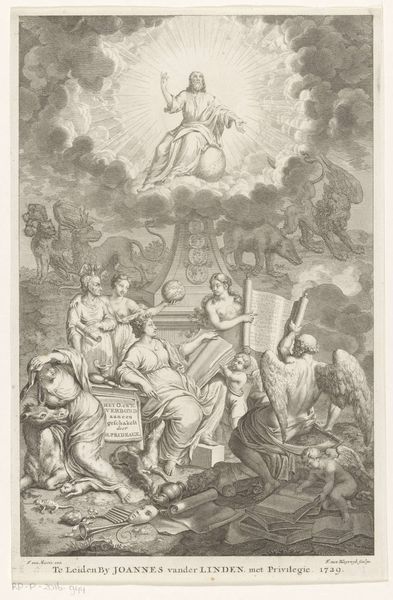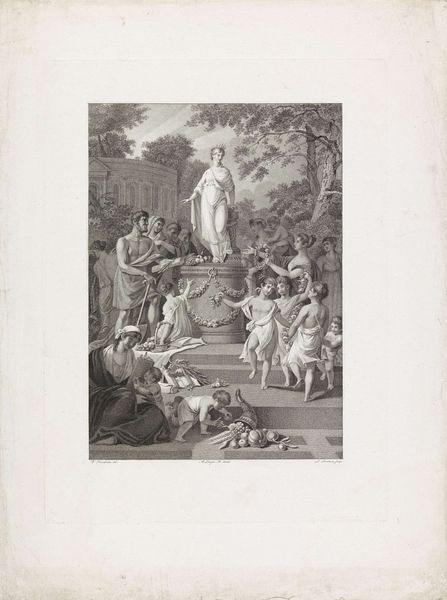
print, engraving
#
baroque
# print
#
old engraving style
#
landscape
#
figuration
#
line
#
history-painting
#
engraving
Dimensions: height 226 mm, width 265 mm
Copyright: Rijks Museum: Open Domain
Curator: Welcome. We are looking at "Hemelvaart van Christus", or "Ascension of Christ" by Gèrard Edelinck. It’s a print held here at the Rijksmuseum, dating somewhere between 1652 and 1707. Editor: My first thought? The play of light is compelling. Look at how the figure of Christ practically bursts out of the dense lines of the engraving. There’s real dynamism at play here. Curator: Absolutely. This image embodies the baroque era’s interest in depicting movement and emotion, especially within religious contexts. Notice how Christ’s ascension is positioned centrally, framed by awestruck figures—presumably his apostles and followers. How does the socio-political landscape of the time affect how such religious scenes are interpreted and displayed? Editor: One can decode the ascension as a structural division: below are earthbound disciples; above, Christ reunites with the heavens. The lines create textures, defining musculature, drapery, even the turbulent clouds. It almost lends a sculptural quality to the figures. Do you think it draws attention to a sort of theological hierarchy? Curator: Perhaps it highlights power structures both religious and political, that manifest themselves differently, and the artwork, in my view, becomes a stage where those negotiations become tangible. Editor: Indeed, and notice the contrast between the relative stillness of the observing figures and the energy implied by Christ's upward trajectory. Curator: That tension speaks volumes about faith, doubt, and the societal impact of religious figures. And of course, there are several different ways this historical image could be read in relation to gender—how masculine power is coded through this image of ascension is another critical question worth thinking about. Editor: It certainly gives us plenty to reflect on regarding the artwork's careful articulation of form and movement. Curator: Hopefully, it will provoke deeper thoughts about the context of power within society during the baroque era and how different identities navigated their positions.
Comments
No comments
Be the first to comment and join the conversation on the ultimate creative platform.
